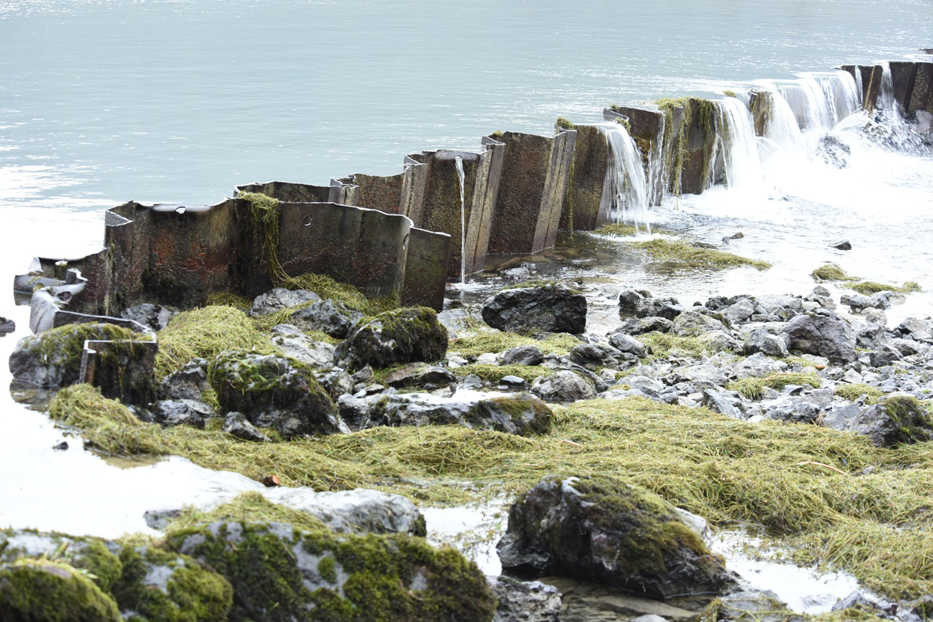Earlier this month I was fortunate enough to take part in the course “Field Techniques for Invasive Plant Management” taught by instructors from the National Conservation Training Center in Shepherdstown, West Virginia. The course was packed full of experienced speakers, PowerPoint presentations, interactive activities and hands-on demonstrations. This course was a dream for someone like me who has very little experience when it comes to invasive plant management. In fact, the little I did know about invasives came from my short time here at the Kenai National Wildlife Refuge where I spent some long days learning first-hand about White Sweet Clover, Bird Vetch, and Elodea.
Invasive plants are introduced by vectors such as cars, people, planes, boats, “dirty” straw, or the commercial trade in ornamental and aquarium plants. Once established, many invasive plants have the ability to negatively impact the natural ecosystem and resources within and around it. It doesn’t take much for infestations to get started and then spread, which is why early detection is so crucial to keeping things in check.
Early Detection Rapid Response (EDRR) is an approach that refers to finding and responding to a new infestation of invasive weeds as soon as possible, before they grow out of control. This was an underlying theme of this training course throughout the week. One of the course’s case studies was how a local group tackled Elodea, a hybrid between Nuttall’s and Canadian Waterweed, right here on the Kenai Peninsula using EDRR. Elodea was first found in Stormy and Daniels lakes and, within only a few short months of identifying it, action was taken with the end goal of eradication.
Elodea is an aquatic plant and is especially harmful because it has the ability to negatively alter salmon habitat. It also does not rely on a seed bank and instead reproduces asexually. This means that only a single strand of Elodea has the ability to replicate itself and take over an entire lake. Because of efforts here by the Kenai Refuge and its partners to implement EDRR, Elodea is currently thought to be eradicated after chemical treatments in 2014 and 2015.
Of course, early detection cannot be executed without substantial communication and collaboration. This theme was further reinforced by the course itself which allowed folks from all over the country to come together to discuss how to get ahead on the war against invasive plants. There were many discussions about what was working and what wasn’t, and how to best conquer the specific problems people were having in their respective areas. Exchanging ideas and protocols gave people the chance to create a successful game plan and bring that knowledge back with them upon returning home.
There were people from different states but a large majority came from different areas of Alaska. The conflict with invasive plants is especially important here because we have the rare opportunity to learn from the mistakes of the Lower 48 while we still have the upper hand. Alaska’s geographic position in the northern latitudes and lack of an extensive road system help to reduce the introduction and spread of invasive plants. Unfortunately, what we lack in roads is made up for by a large population of planes and float planes that can act as vectors to transport invasive plants to remote areas of the state. Again, education is crucial because this problem can be easily solved when pilots understand the risk and take the extra time to ensure their planes are clean and free of plant material before taking off. If everyone is on the same page we can stay one step ahead.
Alaska is already doing a great job at continuing education and informing the public. In fact, there is an upcoming invasive species workshop scheduled for October 25-27, 2016 in the City of Fairbanks at the Wedgewood Resort. This is another great opportunity for professionals to collaborate and connect.
Wondering how you can help as a citizen? Downloading the Alaska Weed ID app on your cell phone allows you to identify weeds in your area and submit your observations. The more that people keep an eye out the better our chances at catching infestations early on!
Alaska’s vast and beautiful wilderness is a trademark of this state and the reason many come to call it home. The threat of invasives has already begun but with proper education, early detection, and rapid response we have the ability to halt invasives in their path. If we don’t, we risk altering the natural landscape we’ve all come to love.
Mariah McInnis is a biological intern at Kenai National Wildlife Refuge. She recently graduated from Florida State University, majoring in Environmental Studies. Find more information at http://www.fws.gov/refuge/kenai/ or http://www.facebook.com/kenainationalwildliferefuge.

